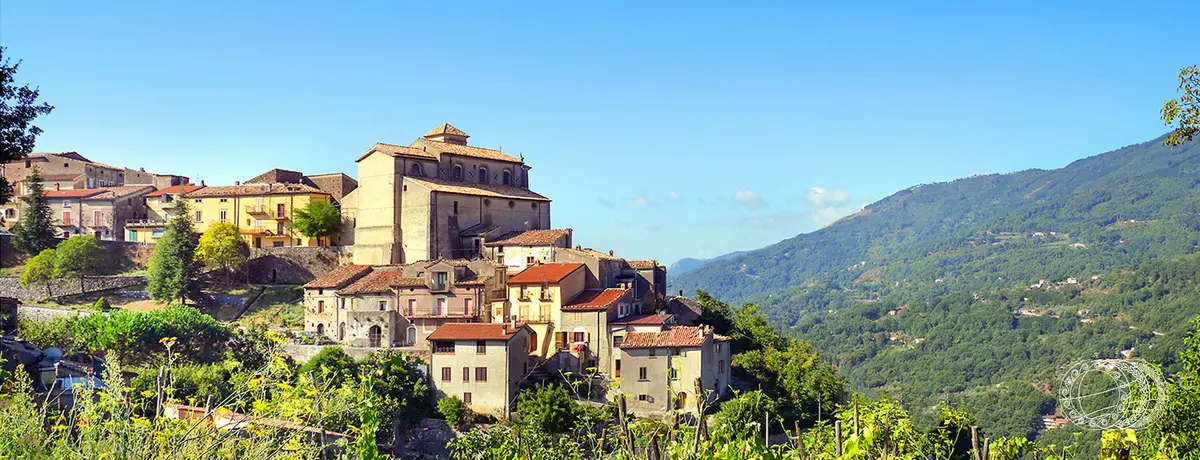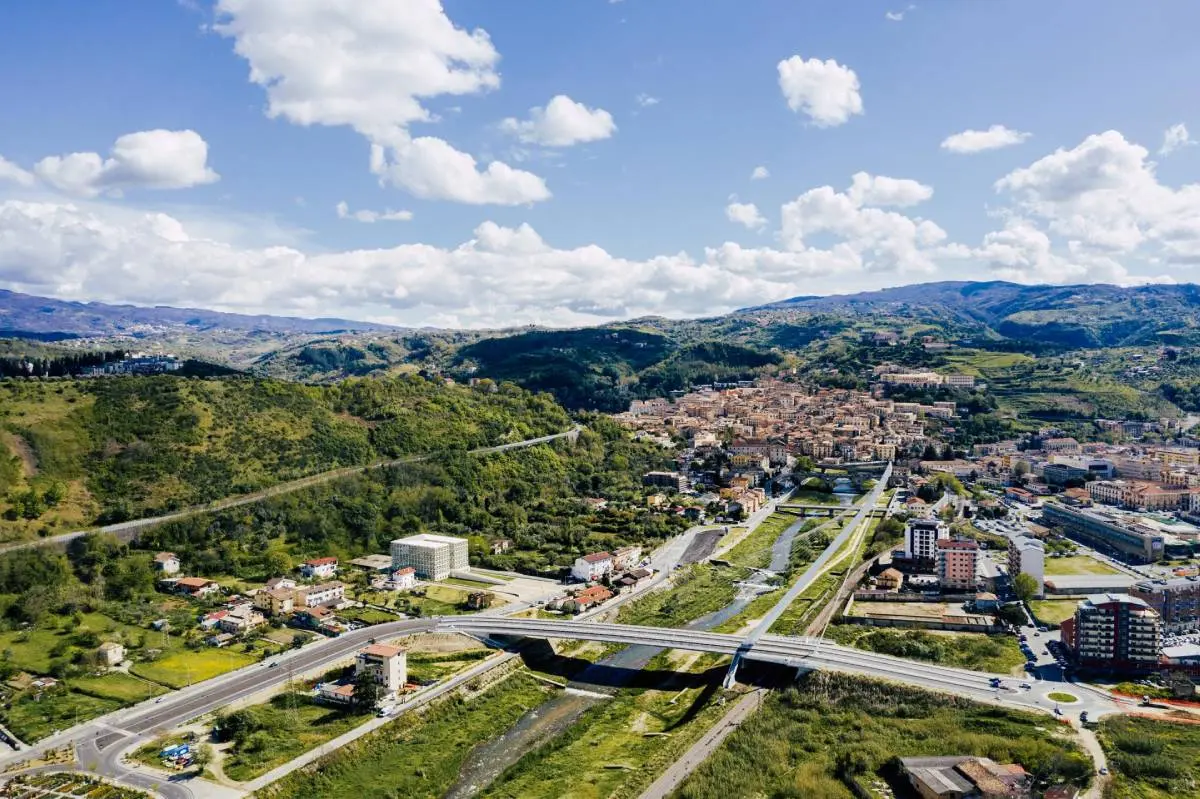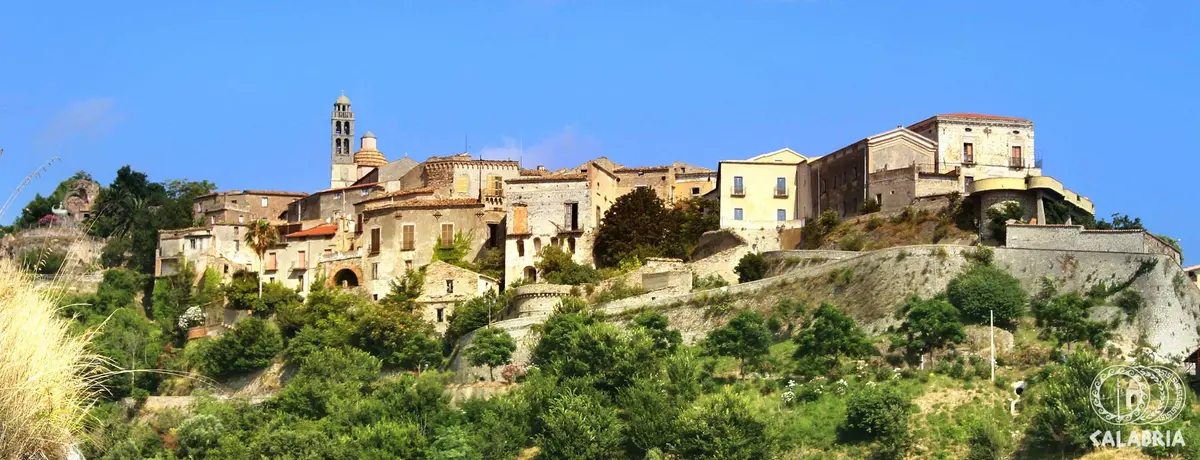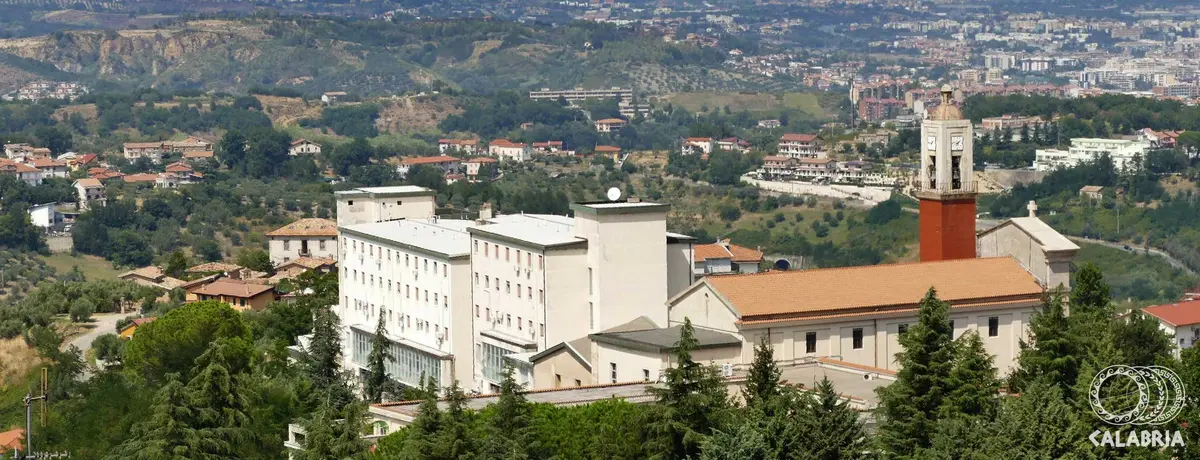Altilia
Altilia, the mystery of the Cave Vault frescoes

Town
Altilia, a small town in the Province of Cosenza, stands on a rocky spur in the Savuto valley, probably built over the ruins of the town of Astalonga. The inhabited town centre displays the typical morphology of a naturally fortified medieval layout.
The urban environment is laden with great poise and charm, with some element of great interest and a location on the edge of the precipice called Castle.
The discovery of the caves represents an important element from a historic and artistic point of view in terms of the town’s history and traditions.
Near the village there is an ancient bridge, referred to as the "Ponte di Annibale” (Hannibal's bridge), which is commonly traced back to the Roman era and which evidences the town's ancient history. According to various sources, its origins would be attributable to the period preceding the year one thousand, although one thing is certain: that the village was repeatedly destroyed by earthquakes that affected the province over the course of centuries. Another important road was the ancient Via Popilia that crossed the Savuto river through the Annibale bridge where a post station stood. From a landscape point of view, Altilia displays the features of hilly towns, immersed in green and surrounded by mountains.
The town’s main monument is the parish church dedicated to Santa Maria Assunta in Cielo (The Assumption of Holy Mary into Heaven), which dates back to the fifteenth century and today is the result of multiple reconstructions and represents at the same time the town’s cultural and monumental heritage. The baroque appearance with stucco decorations and the façade in local stone date back to the 18th century. Inside the church there are various wooden statues and a painting of great significance placed on the main altar, depicting the Assumption, work of the Flemish painter Borremans. Worthy of a visit is the former Franciscan convent that today houses a multi-purpose centre, the hub of the town’s social and cultural activities. The building has recently been restored and features some elements in carved stone by local stonemasons. A short distance from the building a cave vault was discovered with ancient frescoes depicting religious subjects. Among the most cherished traditions are the two patron saint’s festivities: that of San Sebastiano (St Sebastian) on 20 January, Altilia’s patron saint, and that of San Giovanni Battista (St John the Baptist) on 24 June, Maione’s patron saint.
The Convent
The historic Convento di Santa Maria delle Grazie was built probably around the 16th century by Domenico Agacio and Gerolamo Curaro for the Franciscan Order of Friars Minor Conventual. The Convent is located on a cliff that overlooks the Savuto valley. Currently, only the outside walls remain from the ancient building that in any case, provide a good idea of its size, while the Church has a single nave and was fully recovered due as a result of restoration works. The portal has a round arch, ribbed at multiple levels and surmounted by a cornice with a rich entablature. The Church is located in a dominant position with respect to the settlement. The Palazzo Marsico (adjoining the convent), now the Town Hall, constitutes an important historical reference that must be protected. The presbytery is quadrangular in shape with a floor higher up with respect to the floor level of the main body and is linked to the convent through a corridor. It delimits the single nave with 2 ribs from which shaped and sculpted limestone ashlars were removed in the past from the sacred arch. The ashlar mouldings are typical of Franciscan art and represent the most important and expressive form of evidence for the monument's critical interpretation. As it was possible to recover it, the first step was to arrange the arch’s entire structure into place, which once completed, gave a more precise idea of the original height of the Church's roof, which was unlikely to be on a single level. In addition, by looking at some old photos, it was ascertained that the roof was a pitched roof supported by wooden trusses and no doubt covered the entire nave above the sacred arch; on the contrary, the assumption of a lower roof section of the presbytery was uncertain. Today, the roof has been completely redone with wooden roof trusses seamlessly binding to the old structure. Missing masonry sections were rebuilt with "opus" terracotta brickwork which merges well with the stone colour to disguise any inconsistencies in existing masonry sections that may have collapsed. The curb in reinforced concrete was built slightly set back with respect to the edge of the outer perimeter in order to have allowed covering it with the same bricks. The entrance portal is not the original one: based on traces visible from the inside, the arch was lowered and bigger. The current portal with a round arch probably dates back to the end of 1700s given its similarity with other Churches of neighbouring towns. The nave has three portholes in the glass on the floor, from which you can catch a glimpse of some chambers used as mass graves. The five tombs contained in the building are all covered with a thick sheet of glass.
The Cave Vault
Following the lucky discovery behind the church Santa Maria delle Grazie and immediately downstream of the convent, which currently houses the Town Hall, a small cave vault was discovered containing frescoes with images of Christ, the Virgin, St Sebastian and St Francis of Paola; some were well-preserved and clearly visible while others were unclear. The magnitude of the discovery represents an important element from the historical and artistic interest point of view due to the town's history of religion, worship and traditions. The caves, which are only a few metres from one another, were discovered by two wardens who, in trying to cut the grass in the ground behind the town, saw the first cave. In reality their attention was captured mainly by the image of San Francesco di Paola impressed on the left wall of the small vault. A few metres down they found the second cave, also almost entirely closed-up. The discovery has allowed to bring to light a series of frescoes, all found in a single cave vault; some of which are well-preserved, such as the image of San Francesco di Paola and that of the Virgin with Child, while others have been corroded by time such as the icon of Christ and that of San Sebastiano, Altilia's patron saint. In particular, these last two images form part of a single large fresco in which the other figures that compose it are not clearly visible or easily recognised.
Useful information
What to know about Altilia
Events
There are 1 events scheduled.
Infopoint Altilia
Via Convento, 2, Altilia
No result





